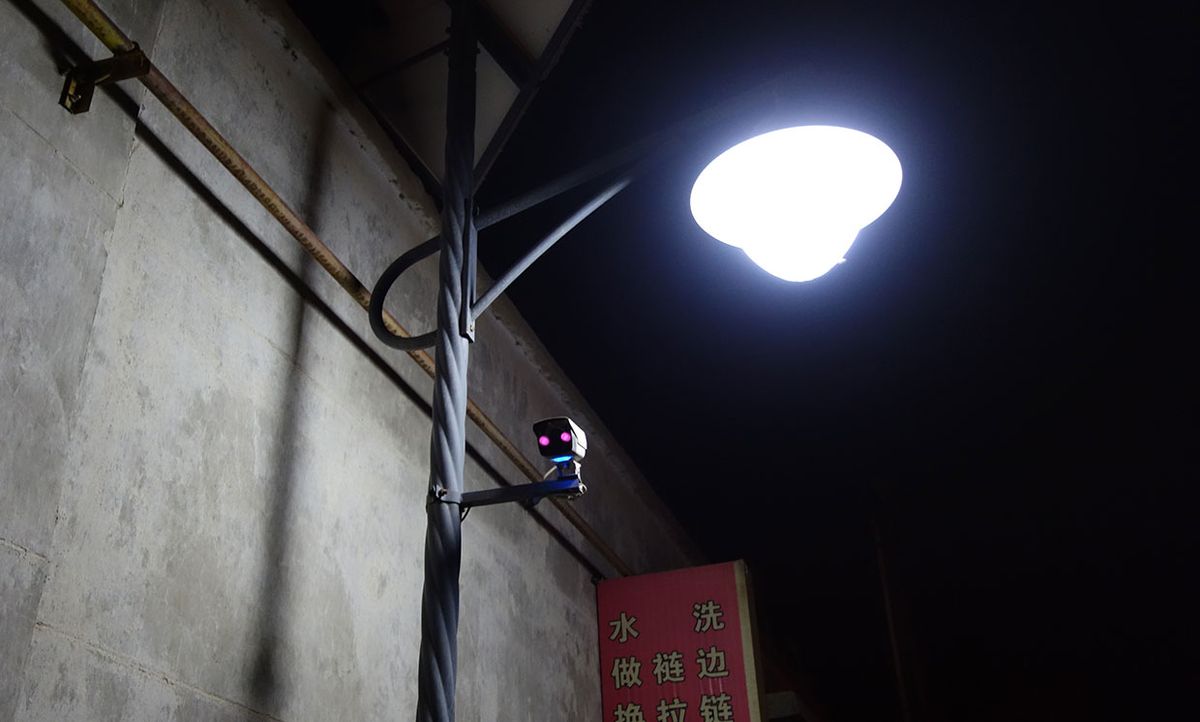Last year I boarded a flight to China on a mission to report on an emerging supergrid whose scale and scope remain unimaginable for grid operators everywhere else. Seeing China’s ultrahigh-voltage transmission power technology up close had been a longstanding dream for this incurable power geek. Energy writers, myself included, had covered China’s UHV program from the outside. This time, I’d been invited by the State Grid Corp. of China—the world’s largest utility by revenue and workforce and China’s UHV leader—to step inside its installations and research labs.
I naturally wanted to see State Grid’s latest and greatest equipment, and that meant going to the Xinjiang Uyghur Autonomous Region—the northwestern territory named for its Turkic Muslim ethnic group.
Xinjiang was the place to go because its rich coal, wind, and solar resources far exceed its energy needs, and State Grid was building its largest UHV transmission project to date to export those riches. I wanted to see the project’s converter station outside Xinjiang’s capital, Ürümqi, which was designed to take in alternating current from local power plants and spit out direct current at a blistering 1,100 kilovolts—a third higher voltage than China’s previous record-setting 800-kV converters. That DC voltage would enable electricity from Xinjiang to travel as far as Shanghai—nearly 1,000 kilometers farther than any other power line in the world.
You can read all about the technology behind Xinjiang’s 1,100-kV UHV DC project in my recent exclusive report on its subsequent startup. And you can learn about the origins of State Grid’s UHV technology and its struggle to operate the resulting UHV AC-DC power grid in “China’s Ambitious Plan to Build the World’s Biggest Supergrid,” my feature in IEEE Spectrum’s March issue.
Alas, I never did see the groundbreaking infrastructure in Xinjiang myself.
My previous reporting in China had prepared me for the usual language and cultural barriers. But on this trip, I encountered a whole new set of controls on speech and movement that threatened to constrain my work. As I got ready to travel to China last March, government clampdowns against suspected separatists and extremists within the Uyghur community were drawing international criticism. Human rights groups and some Western governments called out a new security regime in Xinjiang that included “widespread use of arbitrary detention, technological surveillance, heavily armed street patrols, security checkpoints and an array of intrusive policies violating human rights,” according to Amnesty International [PDF].
Criticism intensified when Radio Free Asia, a U.S. government–funded media outlet, reported that 120,000 Uyghurs were being held in political re-education camps in one Xinjiang district, and more were being detained elsewhere. The scale reinforced arguments by China’s critics that its police crackdown amounted to discriminatory racial and religious profiling.
The first sign that my visit to Xinjiang might fall through was a mysterious series of hotel cancellations. I’d planned a side trip to see the ancient Silk Road city of Turpan and its archaeological sites and Uyghur culture. One week prior to my flight to Xinjiang, the online travel site trip.com notified me that my hotel booking for Turpan had been canceled. When I tried to make other bookings in Turpan, they were similarly reversed.
Any hope of seeing State Grid’s construction in Xinjiang ended two days before my flight to China, when my hosts reported that the territorial government had imposed a 20-day delay to review my admissibility.
I recognized that the “delay” was a de facto rejection. Subsequent restriction and harassment of foreign journalists bound for Xinjiang suggest I got off light. Officially, the only Chinese region that’s off-limits to journalists is Tibet—a policy that recently prompted U.S. travel restrictions on some Chinese officials. But many reporters also experienced “prohibited or restricted” access in Xinjiang and other areas deemed “sensitive,” according to a 2018 survey by the Foreign Correspondents’ Club of China.
To bring home the UHV story,I switched to Plan B and set course for one of State Grid’s newest 800-kV converter stations just southeast of Xinjiang in Gansu province. It was well worth the trip. The Qilian Converter Station is named for the glacier-topped mountains nearby. Since starting up in 2017, it’s been exporting gigawatts of power captured from the strong and steady winds those mountains help create.

Visiting Gansu also gave me a taste of Uyghur life. In the oasis town of Dunhuang (Dukhan in Uyghur), I dined on lamb’s brain–an intensely rich and disconcertingly sticky-smooth pâté served in cranium. I also witnessed the surveillance state that China is building outward from Xinjiang.
The photo at the top, taken in a small alley in Dunhuang, shows one of the security cameras that are now omnipresent in Xinjiang and paired with facial-recognition algorithms. According to the Washington Post’s former China bureau chief Simon Denyer, “Facial-recognition cameras [in Xinjiang] have become ubiquitous at roadblocks, outside gas stations, airports, railway and bus stations, and at residential and university compounds and entrances to Muslim neighborhoods. DNA collection and iris scanning add extra layers of sophistication.”
Since my trip in March 2018, there has been growing recognition of the troubles in Xinjiang. In August an expert panel assembled by the United Nations Human Rights Council, citing “credible sources,” stated that China had interned more than 1 million people, turning Xinjiang into a “no rights zone” where Muslims were treated as “enemies of the State.” Panel member Gay McDougall, distinguished scholar-in-residence at Fordham University’s Leitner Center for International Law and Justice, said authorities had criminalized common cultural practices, including “daily greetings, possession of certain halal products, and growing a full beard.”
Xinjiang is making news again this month ahead of the U.N. group’s next session, where it will take up a report on human rights in China. Earlier this month, Turkey’s foreign ministry condemned what it called “the re-emergence of concentration camps in the 21st century.” Human rights groups and some governments are calling for an international fact-finding mission.
For its part, Xinjiang’s territorial government finally acknowledged the camps’ existence in October, describing them as “professional vocational training institutions.” A Chinese delegate to the U.N. Human Rights Council insisted the camps were needed, “to protect the human rights of the majority of people,” according to Canada’s Globe and Mail. He added that Xinjiang’s detainees have “never thought that life could be so colourful and so meaningful,” before concluding: “Xinjiang is a nice place. Welcome to Xinjiang.”
That is, as long as you’re not a Uyghur—or a journalist.
Peter Fairley has been tracking energy technologies and their environmental implications globally for over two decades, charting engineering and policy innovations that could slash dependence on fossil fuels and the political forces fighting them. He has been a Contributing Editor with IEEE Spectrum since 2003.




